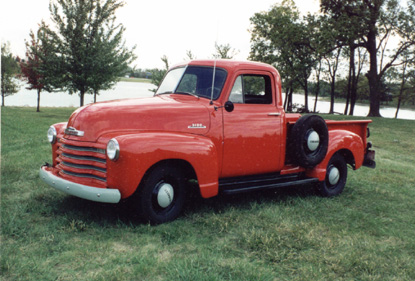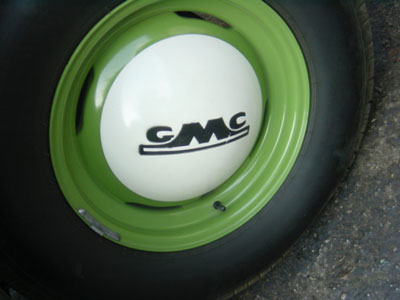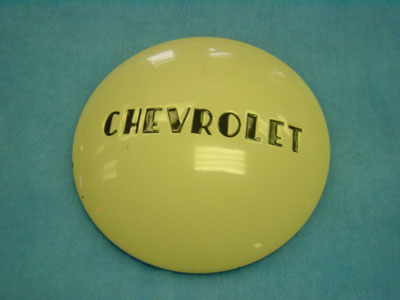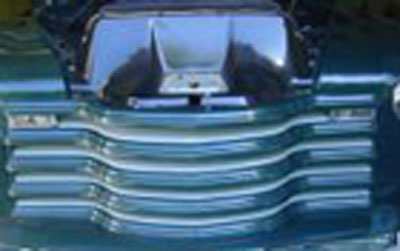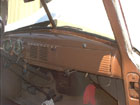Prices of more valuable metals such as copper and nickel reached their height during mid 1951 through 1953. Though U.S. shortages were much less than in WWII, there were price increases in the market that affected the financial bottom line of auto and truck manufacturers.
America almost demanded chrome on cars even if it raised prices. Decorative shiny trim was almost necessary to get buyers into the showroom.
Trucks were a different story! They were work vehicles. Eliminating the chrome extras did nothing to lessen the load capacity or operations off road. To keep the price down GM and other truck manufacturers removed much of the chrome and replaced it with paint. The steel stampings were the same, they were just painted. It was very necessary for GM's base model to be priced low. City, county, federal, and many companies bought fleet trucks that offered the lowest price. Purchases had little to do with appearance. Even a $10.00 savings could make a sale.
The noticeable changes on GM light trucks is the lack of chrome on hub caps, grill bars, bumpers, and even the wiper knob. Stainless steel also felt the Korean War shortages. The deluxe five window pickup cab no longer had the stainless around the windshield and side windows. The glove box as well as the radio speaker horizontal trim was now painted steel. The deluxe panel truck with all its extra stainless side trim was now history.
By 1954 the chrome and stainless was back stronger than ever though some base models were kept in paint to hold their price low.
The following photos show just a few examples of GM's Korean War era trucks. Considering their uses it doesn't look too bad.
